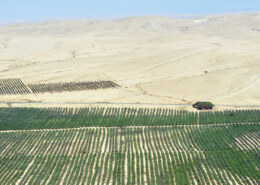Enhancing crop traits through protein modification involves: 1. **Gene Editing**: Use CRISPR/Cas9 for precise modifications in the plant genome. 2. **Introducing Novel Proteins**: Incorporate proteins from other organisms to confer beneficial traits like pest resistance. 3. **RNA Interference (RNAi)Read more
Enhancing crop traits through protein modification involves:
1. **Gene Editing**: Use CRISPR/Cas9 for precise modifications in the plant genome.
2. **Introducing Novel Proteins**: Incorporate proteins from other organisms to confer beneficial traits like pest resistance.
3. **RNA Interference (RNAi)**: Suppress genes responsible for undesirable traits using RNAi technology.
4. **Protein Modification**: Adjust proteins post-translationally to enhance stability and functionality, often through methods like glycosylation.
5. **Synthetic Biology**: Design new proteins or variants optimized for specific agricultural functions, such as improving photosynthesis or stress tolerance.
6. **Delivery Systems**: Utilize nanoparticles or other carriers to efficiently deliver modified or synthetic proteins into plants.
These methods collectively aim to improve crop traits such as yield, resistance to pests and diseases, nutrient content, and adaptability to environmental stresses, contributing to sustainable and efficient agriculture.
See less


IoT initiatives and tasks are revolutionizing agriculture by making it extra efficient, sustainable, and more healthy. Precision agriculture, pushed by IoT, utilizes smart sensors and gadgets to display soil situations, weather styles, and crop fitness in actual-time. This allows farmers to optimizeRead more
IoT initiatives and tasks are revolutionizing agriculture by making it extra efficient, sustainable, and more healthy. Precision agriculture, pushed by IoT, utilizes smart sensors and gadgets to display soil situations, weather styles, and crop fitness in actual-time. This allows farmers to optimize water usage, reduce waste, and apply fertilizers and insecticides more as it should be, minimizing environmental effect. Automated irrigation structures, managed by IoT sensors, make sure plants acquire the right quantity of water, lowering water wastage and preventing over-irrigation. IoT-powered drones and satellite tv for pc imagery can survey big agricultural areas, imparting facts for crop health tracking, pest detection, and yield prediction. Livestock tracking structures tune animal fitness and conduct, enhancing animal welfare and productivity. IoT-based supply chain management complements traceability and transparency, ensuring meals protection from farm to desk. Smart greenhouses, geared up with IoT sensors, alter environmental conditions to maximize crop yields and first-class. These projects no longer best boom agricultural productivity and useful resource efficiency however also make a contribution to sustainable farming practices, leading to healthier vegetation and reduced environmental impact. The integration of IoT in agriculture holds the promise of transforming the arena right into a greater adaptive, data-pushed, and environmentally pleasant enterprise.
See less